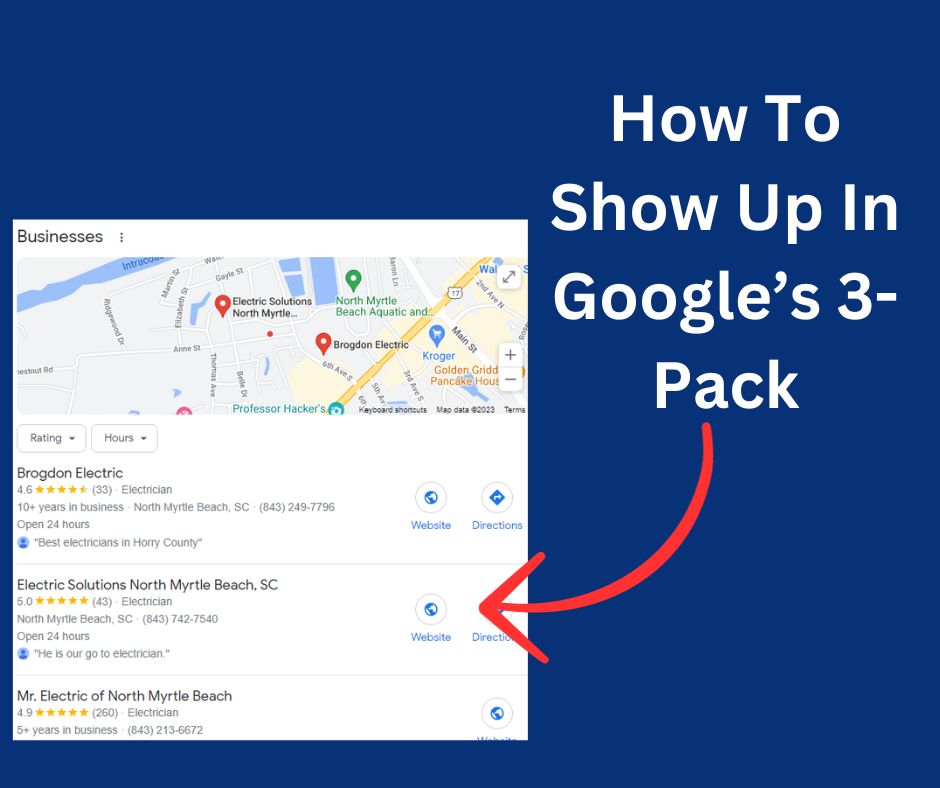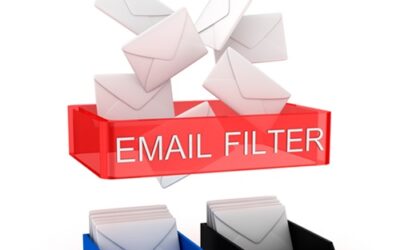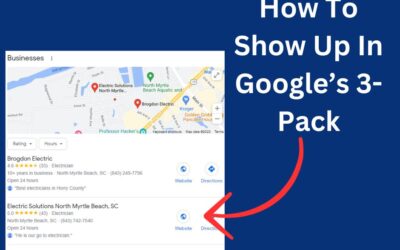Home Services Contractors – Plumbers | Electricians | Roofers | Remodelers | General Contractors
In today’s digital age, establishing a robust online presence has become crucial for home repair service providers. With a staggering 76% of consumers researching a company’s website before visiting in person, the importance of online visibility cannot be overstated. However, without a prominent position in search engine results, it may be difficult for potential clients to locate your business among competitors.
Pay-Per-Click (PPC) campaigns have become a potent instrument for enhancing your online marketing approach. Home service providers can effectively reach their target audience and drive qualified leads to their businesses by harnessing the potential of PPC advertising. They can position themselves before potential customers actively searching for their services. Unlike traditional advertising methods, PPC enables companies to pay only when someone clicks on their ads, making it a cost-effective marketing approach.
What is PPC, and How Does it Work for Home Services Providers?
PPC is a digital marketing method that helps businesses promote their services locally. It lets you prominently display your services on search engine results pages and other websites. But how does PPC function exactly? PPC is based on a simple principle: marketers bid on specific keywords relevant to their services, and their adverts are displayed when customers conduct relevant searches. With PPC, you pay a fee when someone clicks on your ad. Your bid, ad quality, and landing page relevance determine your ad’s position in search results.
For home service providers, PPC offers a unique advantage by allowing them to target potential customers based on location and search intent. By selecting relevant keywords related to plumbing, electrical work, roofing, general contracting, remodeling, landscaping, or any other specific services you offer, you can ensure your ads are shown to individuals actively seeking those services in your area.
PPC campaigns for home services involve thorough keyword research and the creation of compelling ad copy that entices users to click. Setting a budget and bidding strategy helps control costs and maximize ROI. Monitoring and analyzing campaign performance is crucial for optimizing ads and reaching the right audience. The beauty of PPC lies in its ability to deliver immediate results. As soon as your campaign goes live, your ads can appear before your target audience, generating clicks and driving traffic to your website or landing page.
Benefits of PPC Campaigns for Home Services
Increased Visibility and Reach
PPC campaigns provide home service providers with increased visibility in search engine results. By strategically bidding on relevant keywords and optimizing your ads, you can ensure that your business appears prominently when potential customers search for services in your area. This enhanced visibility helps you stand out from the competition and increases the chances of attracting a larger audience.
Cost-Effective Marketing
PPC campaigns offer a cost-effective marketing solution for home service providers. Unlike traditional advertising methods that require upfront payments regardless of performance, PPC allows you to pay only when someone clicks on your ad. This pay-per-click model ensures that your marketing funds are spent on actual ad engagement, enabling the efficient use of your marketing budget by making it simple to calculate your return on investment (ROI).
Targeted Advertising
With PPC, you have precise control over who sees your ads. You can target specific geographic locations, ensuring your ads are displayed to potential customers within your service area. Additionally, you can target keywords related to your particular home services, ensuring that your ads reach individuals actively seeking those services. This targeted approach maximizes the relevance of your ads and increases the likelihood of conversions.
Immediate Results
PPC campaigns offer a remarkable benefit by delivering immediate results. As soon as you launch your campaign, your ads have the potential to appear in search results, effectively driving traffic to your website or landing page. This instant visibility is especially advantageous for home service providers who seek fast connections with potential customers and aim to capitalize on their intention to purchase or request a service.
Flexibility and Optimization
PPC campaigns offer flexibility and optimization opportunities. You can set your budget and bidding strategy, allowing you to control costs and adjust your campaign based on performance. By monitoring key metrics and analyzing campaign data, you can make data-driven optimizations to improve ad relevance, click-through, and conversion rates. This iterative approach helps you fine-tune your campaigns for better results over time.
Measurable Results and Insights
PPC provides measurable results and valuable insights into your campaign performance. Analytics tools allow you to track various metrics such as impressions, clicks, conversions, and cost per acquisition. These metrics offer valuable data to evaluate your campaigns’ success, identify improvement areas, and make informed marketing decisions. Measuring and analyzing performance empowers home service providers to optimize their PPC campaigns for maximum impact.
Ad Copy Best Practices for Home Service Providers
Crafting compelling ad copy is essential for home service providers looking to capture the attention of potential customers and drive engagement with their PPC campaigns. By implementing effective ad copy strategies, you can convey your unique value proposition, entice users to click on your ads, and ultimately increase conversions. Here are some best practices to consider when creating ad copy for your home service PPC campaigns:
Highlight Unique Selling Points
Emphasize what sets your home service business apart from the competition. Whether it’s your years of experience, exceptional customer service, or specialized expertise, highlight these unique selling points in your ad copy. Communicate the benefits that customers can expect when choosing your services.
Emphasize Value Propositions
Clearly articulate the value and benefits customers will receive by selecting your home services. Please focus on the problems you can solve or the improvements you can bring to their homes. Highlight key features, warranties, or guarantees that make your services stand out. This aids in establishing credibility and trust among potential customers.
Use Persuasive Language
Capture your audience’s attention by employing persuasive language that profoundly resonates with their needs and desires. Utilize solid and action-oriented words that instill a sense of urgency and inspire immediate action. Incorporate words that evoke emotions and help potential customers visualize the positive outcomes of choosing your services.
Incorporate Relevant Keywords
Integrate relevant keywords in your ad copy to improve ad relevance and increase the chances of your ads appearing for relevant searches. Align your ad copy with your target keywords, ensuring a solid connection between the user’s search intent and your messaging. This helps improve your ad’s visibility and click-through rates.
Clear Call-to-Action
Include a compelling call-to-action (CTA) that effectively guides potential customers to take the desired action, whether scheduling a consultation, obtaining a price quote, or booking a service. Utilize functional language and a sense of urgency to elicit a prompt reaction. It makes it simple for customers to comprehend the subsequent actions.
Utilize Ad Extensions
Take advantage of ad extensions, such as site links, call extensions, and location extensions, to provide additional information and improve the visibility and relevance of your ads. Site links can direct users to specific pages on your website, while call extensions enable them to reach you with a simple click. Location extensions help local customers find your physical address easily.
Negative Keywords and Refining Targeting for Home Service Providers
In the world of PPC advertising, targeting the right audience is crucial for the success of your home service campaigns. Using negative keywords is one effective strategy to refine your targeting and optimize your ads. Negative keywords are specific terms or phrases that you exclude from triggering your ads, ensuring that your ads are shown to the most relevant audience. Here’s how home service providers can leverage negative keywords to enhance their PPC campaigns:
Understand the Concept of Negative Keywords
Negative keywords are the words or phrases that, when added to your PPC campaign, prevent your ads from appearing in search results containing those terms. By identifying and adding negative keywords, you can avoid wasting ad spending on irrelevant clicks and improve the overall efficiency of your campaign.
Identify Irrelevant Search Terms
Conduct thorough keyword research and analyze search terms that trigger your ads. Look for keywords related to your services that must be aligned with your target audience or business goals. For instance, if you offer residential plumbing services, you may want to exclude terms like “DIY plumbing” or “plumbing courses” as they attract users seeking information rather than professional services.
Refine Ad Relevance
By incorporating negative keywords, you may optimize your ad’s relevancy and ensure it is displayed to visitors with a greater intent to purchase. For example, a roofing contractor could exclude “roofing jobs” or “roofing training” to focus on customers seeking repair or installation services. This way, you improve the likelihood of attracting qualified leads and maximizing your conversion rates.
Improve Click-Through Rates (CTR) and Conversion Rates
Through negative keyword targeting, you may increase your click-through and conversion rates by removing irrelevant keywords. Your ads will be displayed to users more likely to be interested in your specific home services, increasing the chances of engagement and conversions. This optimization helps maximize the effectiveness of your advertising budget and improves your return on investment (ROI).
Regularly Monitor and Update Negative Keywords
PPC campaigns require ongoing monitoring and optimization. Regularly review your search term reports to identify new negative keyword opportunities. Stay updated with industry trends and changes in customer search behavior to refine your negative keyword list accordingly. You can ensure your adverts reach the most relevant audience by continually refining your targeting.
Leverage Match Types and Negative Keyword Lists
PPC platforms provide different match types for negative keywords, such as broad, phrase, and exact matches. Understanding these match types allows you to specify the exclusions for your negative keywords. Additionally, you can create negative keyword lists to apply across multiple campaigns, saving time and ensuring consistent targeting across your advertising efforts.
Leveraging Local SEO and PPC Synergy for Home Service Providers
For home service providers, a robust online presence is vital for attracting local customers. To maximize your visibility and reach in local markets, combining the power of local search engine optimization (SEO) with pay-per-click (PPC) campaigns can be a winning strategy. By synergizing these two approaches, you can effectively target local customers, enhance your online presence, and drive more leads. Here’s how you can leverage the synergy between local SEO and PPC for your home service business:
Optimize Google Business Profile (GBP) Listing (formerly Google My Business (GMB)
Claim and optimize your Google Business Profile listing to get started. Provide current and accurate details about your services, contact information, business hours, and location. Encourage consumers to post reviews on your Google My Business profile, as positive evaluations can increase your business’s trust and visibility in local search results.
Align Keywords with Local Intent
Conduct keyword research to identify relevant local keywords for your home service business—target keywords with location-specific terms such as city names, neighborhoods, or ZIP codes. By aligning your PPC campaigns and SEO efforts with local intent, you increase the chances of your ads and organic listings appearing for location-specific searches.
Utilize Local Ad Extensions
Take advantage of ad extensions that enhance the local relevance of your PPC ads. With a location extension, clients have a simpler time locating and contacting you because your address, phone number, and map are all shown.
Incorporate Local Landing Pages
Create dedicated landing pages that are optimized for specific local areas or services. These landing pages should align with your PPC ads, delivering a seamless user experience. Include localized content, testimonials from satisfied local customers, and clear calls to action. This approach increases the chances of conversions and provides a more personalized experience for potential customers.
Track and Attribute Leads
Implement conversion tracking to measure the effectiveness of your PPC campaigns and SEO efforts. Track leads generated through both channels and attribute them accurately. This information will help you examine the performance of each technique, find areas for improvement, and make educated decisions on budget allocation and optimization tactics.
Monitor Local Search Trends
Stay updated with local search trends, industry changes, and competitors’ strategies. Keep an eye on emerging keywords, customer preferences, and shifts in local search behavior. This information will help you refine your SEO and PPC tactics to stay ahead of the competition and capitalize on new opportunities.
Conclusion
PPC campaigns give home service providers powerful tools to enhance their online presence and attract more customers. Businesses can increase their visibility and reach in search engine results by strategically bidding on relevant keywords, optimizing ad copy, and utilizing negative keywords. The benefits of PPC include cost-effectiveness, targeted advertising, immediate results, and measurable insights.
Combining local search engine optimization (SEO) with PPC further amplifies the benefits. Businesses can effectively target local customers and enhance their online visibility in specific areas by optimizing Google Business Profile listings, aligning keywords with local intent, utilizing local ad extensions, and creating localized landing pages.
Overall, understanding and implementing online marketing strategies, particularly PPC campaigns and local SEO synergy, are essential for home service providers looking to succeed in the digital landscape. By harnessing these strategies, businesses can establish a solid online presence, connect with their target audience, and drive growth for their home service operations.






